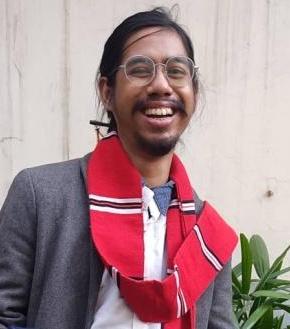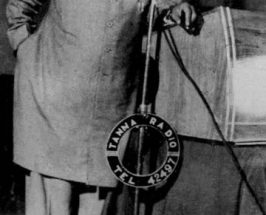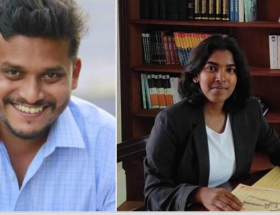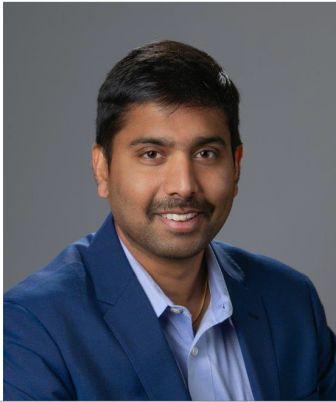Arunabh Konwar
(This is not a historical observation, just extrapolations on personal experiences and observations.)
Over the last couple of years, because of my own limited apparent proximity to some manifestations of the anti-caste movement in university politics in the mainland, I have often felt at loggerheads as to how to identify myself in this anti-caste movement because of my own position as an OBC, as a Tai-Ahom, as being part of the mainstream ‘Assamese society’ where caste operates on subtler terms.
The spillover of the Indian Hindu caste system into the ‘Assamese society’, however, is manifold. The way it establishes itself is either through complete proselytisation or appropriations and approximations.
There is the Brahmin Assamese and the other aspirational upper caste Hindus and then there are the ‘indigenous’ communities. The category of the ‘indigenous’ however remains tenacious and both the caste-Hindu and the ‘indigenous’ communities are constructed as ‘the indigenous’ from time to time for political narrativisations.
However, the ‘indigenous’ communities which have not been traditionally Hindus have been brought into the Hindu fold through either ‘political sanctions’ such as that of the conversion of the monarchs or ‘social reforms’ such as that of the Neo-Vaishnavite movement (the eventual hijack of which by Brahmin forces is another tale in itself).
A major and significant proportion of the Tai-Ahom community, for instance, being proselytised as Hindus through the conversion of the royals and patronage of the Shaivite tradition. Thereafter, they are often attempted to be appropriated as ‘Kshaitriyas’ into the caste system on grounds that they were the warrior-ruling class and hence proximate to the Kshatriya caste group.
This appropriation rests on flimsy ground, however, as the different professional ‘guilds’ or ‘families’, on the basis of which the Indian caste system is often justified even by the likes of Gandhi, exist and vary within the community itself and it is not limited to the warrior-ruling class.
Further, there is a section of Tai-Ahoms who have very orthodoxly held on to whatever is left of their community language, customs and religion. Whether this orthodoxy is productive or counter-productive, that is a different debate, but it has often countered this process of Hindu appropriation, although unsuccessfully, in the public discourse.
Although, this section is waning now. The village that I come from is one of the last remaining hosts to families which belong to this section. My family, in particular, often boasts of tracing their lineage from one of the concubines of the Tungkhungiya dynasty. There is, of course, little written record to prove the same but this ‘fact’ has been passed over generations orally.
Regardless of such ‘puritanic’ claims, the fact of the matter is that till some decades ago, at least, there was vehement opposition to having Hindu names and following Hindu customs in my family. My great-grandfather’s generation was buried in ‘maidams’. My grandfather’s generation was the first to have been partly been buried, and partly cremated. My father’s generation, perhaps, will be the first generation to be entirely cremated.
Be it because of the decades of explosive exposure to ‘modernity’ or the centuries of slow Hinduisation, or maybe because of both, the community is being ‘assimilated’ into the Hindu fold, one generation after the other.
As such, the Tai-Ahom community occupies an interesting position in the caste ladder. Depending on how they are to be utilised in the larger project of the retention of Brahminical control over the ‘Assamese society’: my community becomes ‘Kshatriyas’ to be glorified or an outcaste mongoloid community to be discriminated against. This is not to say that it does not benefit from such categorization at times, which it does, but this variable categorisation remains.
Similar is the case of several other ‘indigenous’ communities that have been brought under the Hindu fold. To be technically correct, most of these communities, including my own, are bracketed under as OBCs. Essentially, therefore, they are economically and socially ‘backward’ even while they might have had some degree of representative presence in the social system and structure. This is because of the Brahminical stronghold over the conceptualisation of the idea of an ‘Assamese society’ (more on this later) through which it exerts its influence in the power relations and structures that emerge out of it.
The remaining ‘indigenous’ communities are then bracketed as SCs and STs. The Koibartya community is one of the most prominent SC communities in the ‘Assamese society’ and perhaps, the most brazen and outright victim of public display of casteism in Assam. The tribal communities which get bracketed under ST are again subject to the brazen caste-based discrimination. They are simultaneously viewed as being totally outside the Hindu fold and at the same time; there are attempts being made to proselytise them. Similar is the case of the central India-origin Adivasi communities that were brought in by the colonial masters and are variously bracketed as OBCs/MOBCs and rarely as STs.
Because of the unequal relationship between the plains and the hills in this region for centuries, the idea of who is at the ‘centre’ of the ‘Assamese society’ remains imbalanced. From this centre, the idea of the ‘indigenous’ is defined and described as per the need of those at the centre.
For a long time, this centre was comprised of ‘indigenous’ communities from the plains and therefore, the tribal communities in the hills have been distant from this centre. However, with the sustained process of Hinduisation and Brahminisation, the centre has now shifted from the ‘indigenous’ communities of the plains to the caste-Hindu communities with the complicity of the ‘indigenous’ communities brought under the Hindu fold.
The Brahmin caste in itself, however, in this society are a handful of caste communities who self-fashion themselves as ‘Brahman’ or sometimes colloquially as ‘Bamun Manuh’ that practice/partake in the ‘strict’ observance of Hindu rituals and beliefs. To understand how this community retains power over the Assamese society, one needs to consider that it is not always a political force that dictates power but rather sometimes it is societal.
For instance, the political power had been vested in the Tai-Ahoms for centuries before colonisation and yet they are not at the centre of the ‘Assamese society’ but rather an important fringe. Their being an important fringe again is a consequence of being an erstwhile political power, while the Korboityas not being an equally important fringe is because of their distance from political power.
The organisation of the ‘Assamese society’ has been, in the last few centuries, around the social, literary and cultural neo-Vaishnavite movement. This movement that began as a social reform has, over the course of time, been hijacked to promote Hindu and Brahminical orthodoxy in the name of ‘reform’.
The idea of an ‘Assamese society’ is centred around this movement and, therefore, the proselytised ‘Hindu Ahoms’ are conducive to this idea while the Tai-Ahoms who fixate on their similarities with the other tribal Tai communities (Tai-Phake, Tai-Aiton, etc.) are not.
Similarly, the ‘Muslim Assamese’, who follow from the tradition of Azaan-Fakir and their ‘assimilation’ as ‘Shankar-Azaan’ by placing them in close proximity to the movement, is conducive to the idea of the centre and therefore, constitutes an important fringe. The East Bengal origin Muslim which doesn’t follow from this tradition, that is also rooted in language, is seemingly not conducive to this idea of the ‘Assamese society’ and therefore, remains outside of it for large parts.
The caste-relations or the caste-system or caste-ladder, then gets reoriented in the ‘Assamese society’ from the vantage point of this centre and the communities’ distance from this centre dictates their position. As such, this caste system spills over into the plains-hills dichotomy and across religions in the ‘Assamese society’.
In such a reoriented caste-ladder, the simple binary of savarna-avarna doesn’t really hold for the ‘avarna’. While casteism is real. The caste system is real. Brahminism is real. The savarna category i.e. the centre of the ‘Assamese society’ is real, however, the definitional excursion and self-identification as a ‘Bahujan’ for the OBC communities or as ‘Dalits’ for the SC communities or as ‘Adivasis’ for the ST communities are on a flimsy ground.
Relative to this centre mostly comprised of caste-Hindu Assamese, the discrimination that these communities face can be relativised and compared with the discrimination faced by Bahujans, Dalits and Adivasis in mainland India at the hands of the upper caste Brahmins. However, to self-identify as one of these terms conflates and erases the reorientation and the spill-over of the Indian caste system to this frontier through the different processes of pre-colonial, colonial and post-colonial exchanges.
Such self-identification is not only problematic for my own community but also to the larger discourse of Bahujan/Dalit/Adivasi politics as the conflation happens for the other end as well.
As such, when self-identification is such an integral part of the process of reclamation and self-assertion, in what terms does one self-identify being a Tai-Ahom in this reoriented caste structure against the Brahminical power structure in the anti-caste movement?
I frankly do not know. And this question haunts me. I am still reading, learning and unlearning to seek answers to this problematics of self-identification but these categories often seem elusive.
P.S. The relation between Brahminism and the Indian state — both colonial and post-colonial — needs to be explored to understand the unequal relations as the Indian state constructs its frontiers.
Further, I do not think the rhetorical politics of indigenous/indigeneity leads to any productive break away from the normative fold and the nexus of the majoritan forces.
The caste-class consciousness that is required to be developed or conceptualised in order to break away from this normative fold should not be restricted in this rhetoric also. This consciousness should be beyond the notions of ‘indigenous’ and ‘indigeneity’ — not brushing them under the rug but working beyond them.
To center this consciousness simply/exclusively around notions of indigeneity would be empty rhetoric really and therefore, easier for appropriation later on.
As such, how are solidarities to be constructed between ‘emancipatory politics’ across geographies and political spectrums, is another problem I do not know the answer to.
~~~
Arunabh Konwar (they/them) is a post-graduate from Ambedkar University Delhi and belongs to the Tai-Ahom community.










